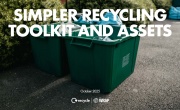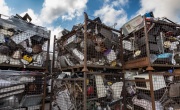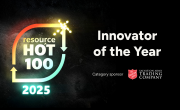The road ahead for WEEE
By Louise Grantham, Chief Executive of REPIC
As we move into a consultation year on the Waste Electrical and Electronic Equipment (WEEE) Regulations by the UK government, the review of extended producer responsibility (EPR) for WEEE provides an opportunity to consider changes that would enhance the current system and improve the circularity of waste electricals.
 The WEEE Regulations were first implemented in 2007, and since then the UK has made great strides in increasing the amount of WEEE treated and recycled through appropriate routes, thereby reducing the amount of WEEE being sent to the landfill. By 2021, over seven million tonnes of household WEEE will have been recycled. However, reported WEEE collection rates by weight have not increased greatly, with reasons for this including changes in product technology, increases in the markets for reused and refurbished products, and external economic factors.
The WEEE Regulations were first implemented in 2007, and since then the UK has made great strides in increasing the amount of WEEE treated and recycled through appropriate routes, thereby reducing the amount of WEEE being sent to the landfill. By 2021, over seven million tonnes of household WEEE will have been recycled. However, reported WEEE collection rates by weight have not increased greatly, with reasons for this including changes in product technology, increases in the markets for reused and refurbished products, and external economic factors.
Can any other observations be made by looking back at the data and what it could mean for the future of the UK WEEE system?
The amount and type of EEE placed on the market, how it is used during its life cycle and how it is finally disposed of as WEEE, is not a constant.
Since 2007, there have been some significant product technology changes, such as the TV digital switchover, the increased use of photovoltaic panels and the development of the ‘smart’ home. Changes in product technology can clearly impact how products must be treated when they reach end of life, which could be many years later.
WEEE collection rates are affected by a combination of interlinking factors, including changes to the “in use” life cycle of a product and activities taking place outside the WEEE system – both good and bad. Working EEE can be exported for reuse, and the reuse, repair and refurbishment of products can extend the in-use phase of a product. The extent to which these activities happen will depend upon available markets, which will vary by type of product, economic conditions and consumer trends. Unfortunately, illegal activities also take place, such as component theft and illegal export. Currently, few of these activities are reported within the WEEE system.
 This article was taken from Issue 102
This article was taken from Issue 102How a product is sold can affect how it arises in the WEEE system. The data shows more WEEE is being collected by producers and retailers directly from the home, which means there could be a greater potential for reuse since returned products are less likely to get damaged when retrieved through this route.
The Covid-19 pandemic has clearly illustrated the weak link between the sale of EEE and the disposal of WEEE and raises further questions around the effectiveness of tonnage-based collection targets in measuring system success. EEE placed on the market increased by 10 per cent between 2020 and 2021. However, WEEE collections fell by nine per cent in the same period. Increasing the WEEE collection targets set for producer compliance schemes each year does not lead to more WEEE being made available for collection.
More information and data gathering can help us articulate what the road ahead – to a more circular economy – means for our sector, and can also help our waste management system to remain agile. It is possible less WEEE could arise, at least in the short term, if product circularity is improved. Allowing beneficial and desirable activities by actors outside the current WEEE system that extend the in-use phase of a product to be encouraged and counted should be the goal; whilst we identify and tackle illegal or undesirable activities.
The forthcoming WEEE consultation provides the opportunity to reflect on the knowledge and awareness we have gained from past experience, whilst shaping the EPR system of tomorrow.






